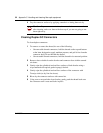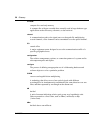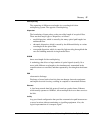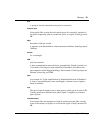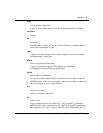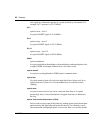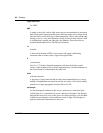
Glossary 57
Installation and Networking Guidelines for Optical Routing
demultiplexing
The separating of different wavelengths in a wavelength-division
multiplexing system. The opposite of multiplexing.
dispersion
The broadening of input pulses as they travel the length of an optical fiber.
There are three major types of dispersion, as follows:
• modal dispersion, which is caused by the many optical path lengths in a
multimode fiber
• chromatic dispersion, which is caused by the differential delay at various
wavelengths in the optical fiber
• waveguide dispersion, which is caused by light traveling through both the
core and cladding materials in single-mode fibers
DWDM
dense wavelength division multiplexing
A technology that allows a large number of optical signals (usually 16 or
more) with different wavelengths to be simultaneously transmitted in the
same direction over one fiber, and then separated by wavelength at the distant
end.
ESD
electrostatic discharge
Discharge of stored static electricity that can damage electronic equipment
and impair electrical circuitry, resulting in complete or intermittent failures.
Ethernet
A local area network data link protocol based on a packet frame. Ethernet,
which usually operates at 10 Mbit/s, allows multiple devices to share access to
the link.
facility
Any provisional configuration that provides a transmission path between two
or more locations without terminating or signalling equipment. Also, the
logical representation of a transport signal.






